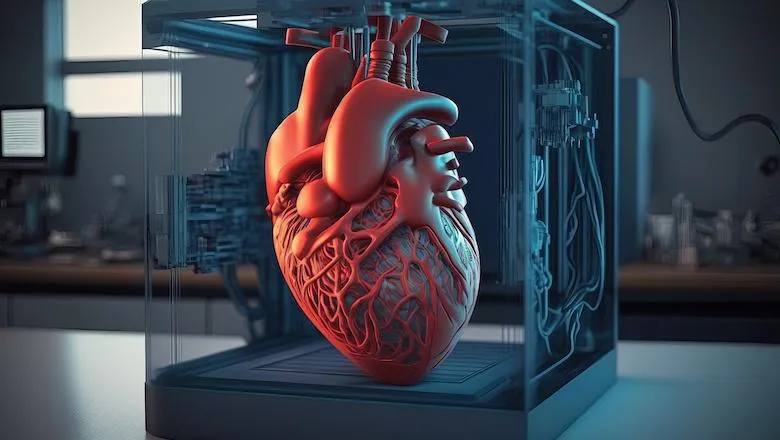By developing valve models that behave like real human valves, new techniques which more accurately characterise the severity of disease can be developed and improved without disrupting patients' care.
Harminder Gill, BM BCh
03 April 2023
3D heart modelling research offers non-invasive diagnosis and treatment options for aortic stenosis
The 3D printing of intricate anatomical structures has become increasingly sophisticated in line with advances in imaging technology, with the use of printed phantoms facilitating the more detailed manipulation of a simulated valve’s anatomy and control of blood flow behaviour.

King’s researchers from the Cardiac Modelling and Imaging Biomarkers group have published two new papers detailing advances in efforts to deploy 3D printed heart models (phantoms) to simulate and study aortic stenosis.
Aortic stenosis is the condition of calcified and thickened aortic heart valves that obstructs blood flow.
Computer modelling and 3D printing of aortic flow phantoms offer an alternative to in vivo studies which carry both patient recruitment difficulties and potential procedural risks compared to the simulated alternative which can bear higher variations in blood pressure flow and drop.
The Journal of Cardiovascular Magnetic Resonance looked at the development of a non-invasive method to access the pressure of blood flow momentum via cardiovascular magnetic resonance (CMR). The Journal of Cardiovascular Translational Research looked at blood flow dynamics and measurements in phantoms models.
Current techniques used to measure the severity of aortic stenosis such as Doppler echocardiography can be subject to uncontrolled sources of error and require invasive pressure measurements for the patient. The use of aortic flow phantoms offering one solution to this challenge.
The decision on how and when to treat stenotic valves is complex and the diagnositc tools typically used in clinical routine have barely evolved during the past 50 years. Thus advances in the study of aortic stenosis patho-physiology are essential to provide a more comprehensive caracterization of this condition. The non-invasive assessment of the pressure recovery distance allows the detection of invasive catheterization errors as well as understanding the vessel length required for haemodynamic homeostasis to be reached.
Joao Filipe Fernandes, PhD, Marie Skłodowska-Curie Early Stage Researcher in Personalized in-Silico Cardiology
These advances will enable us to take well informed decision on the best balance between drugs and surgeries for people living with valve conditions.
Prof. Pablo Lamata, Head of Cardiac Modelling and Imaging Biomarkers Group

